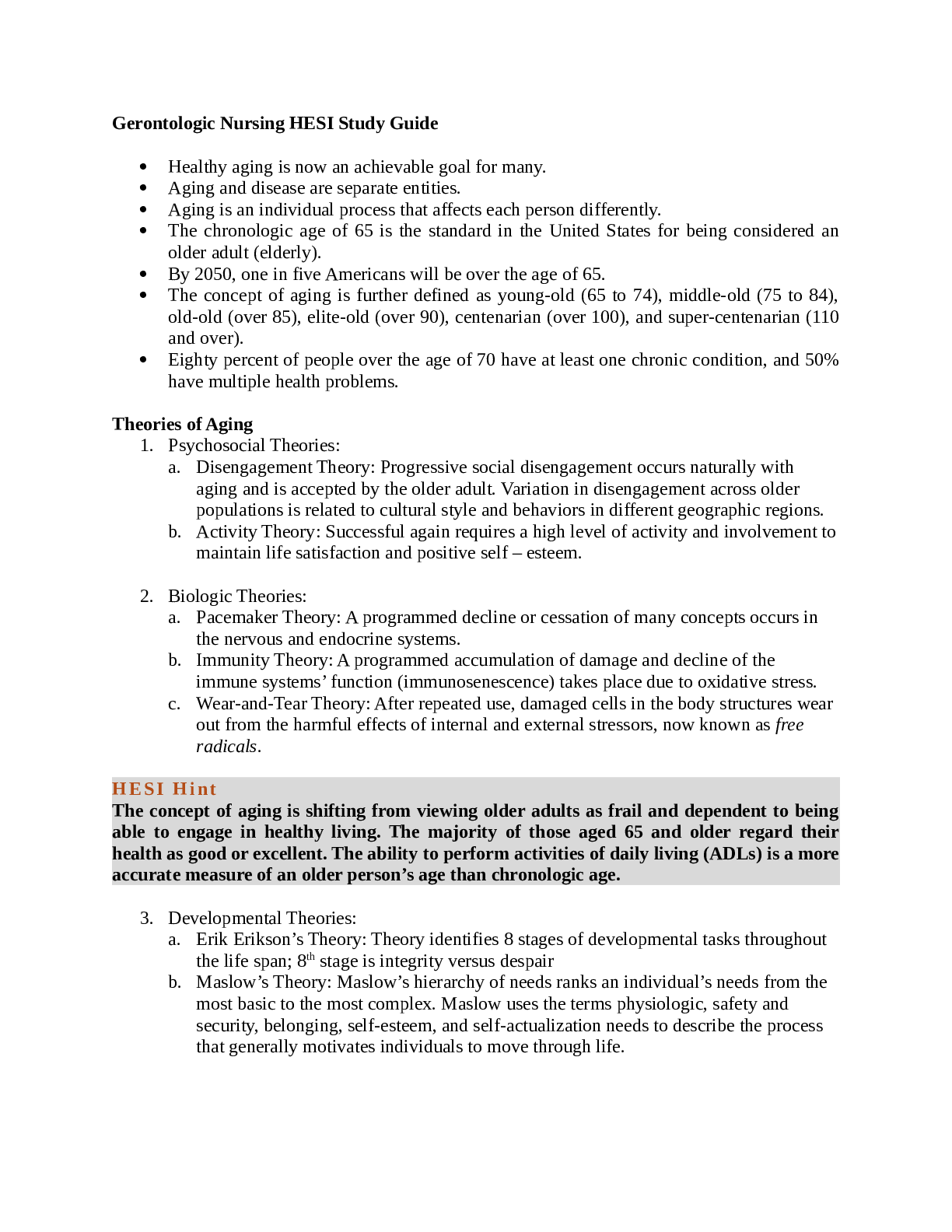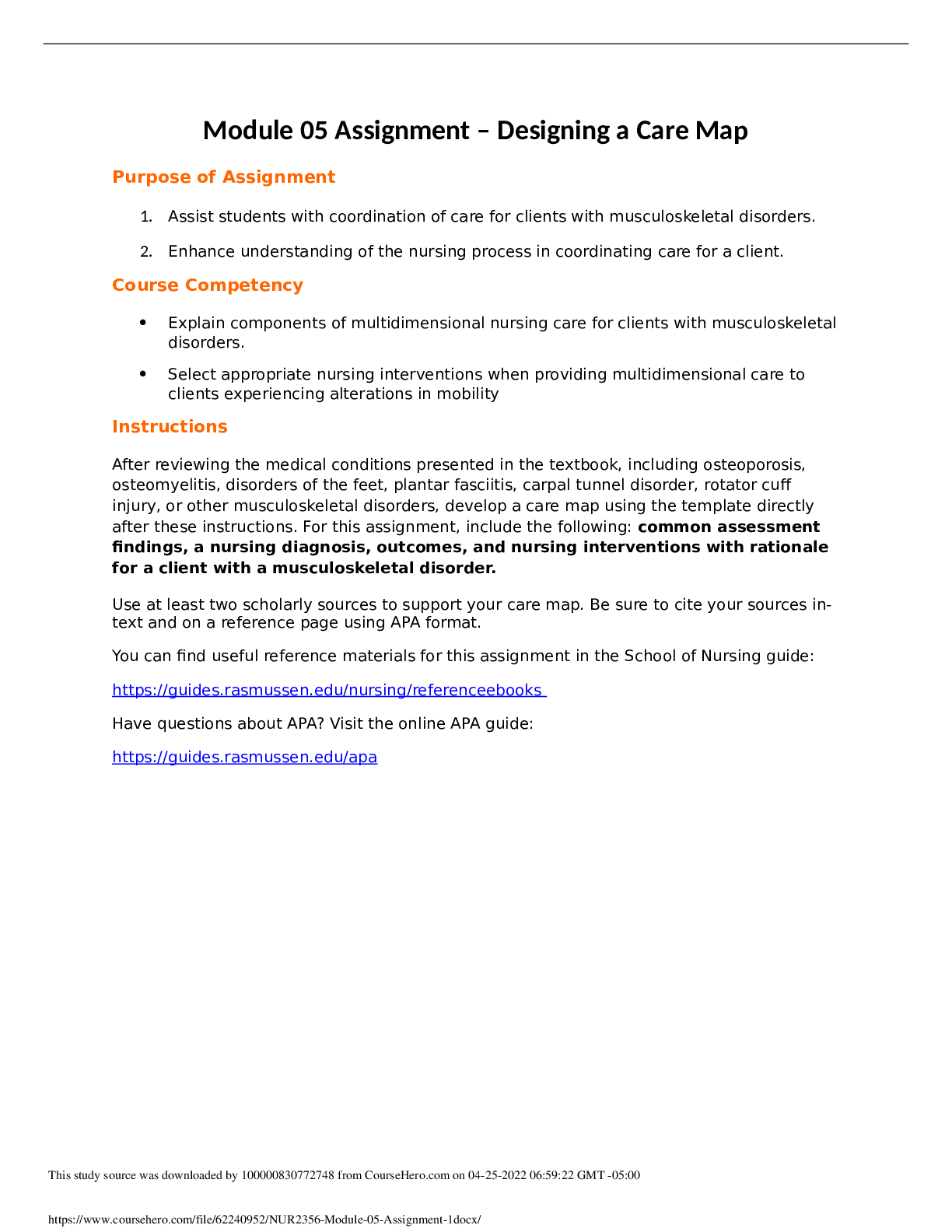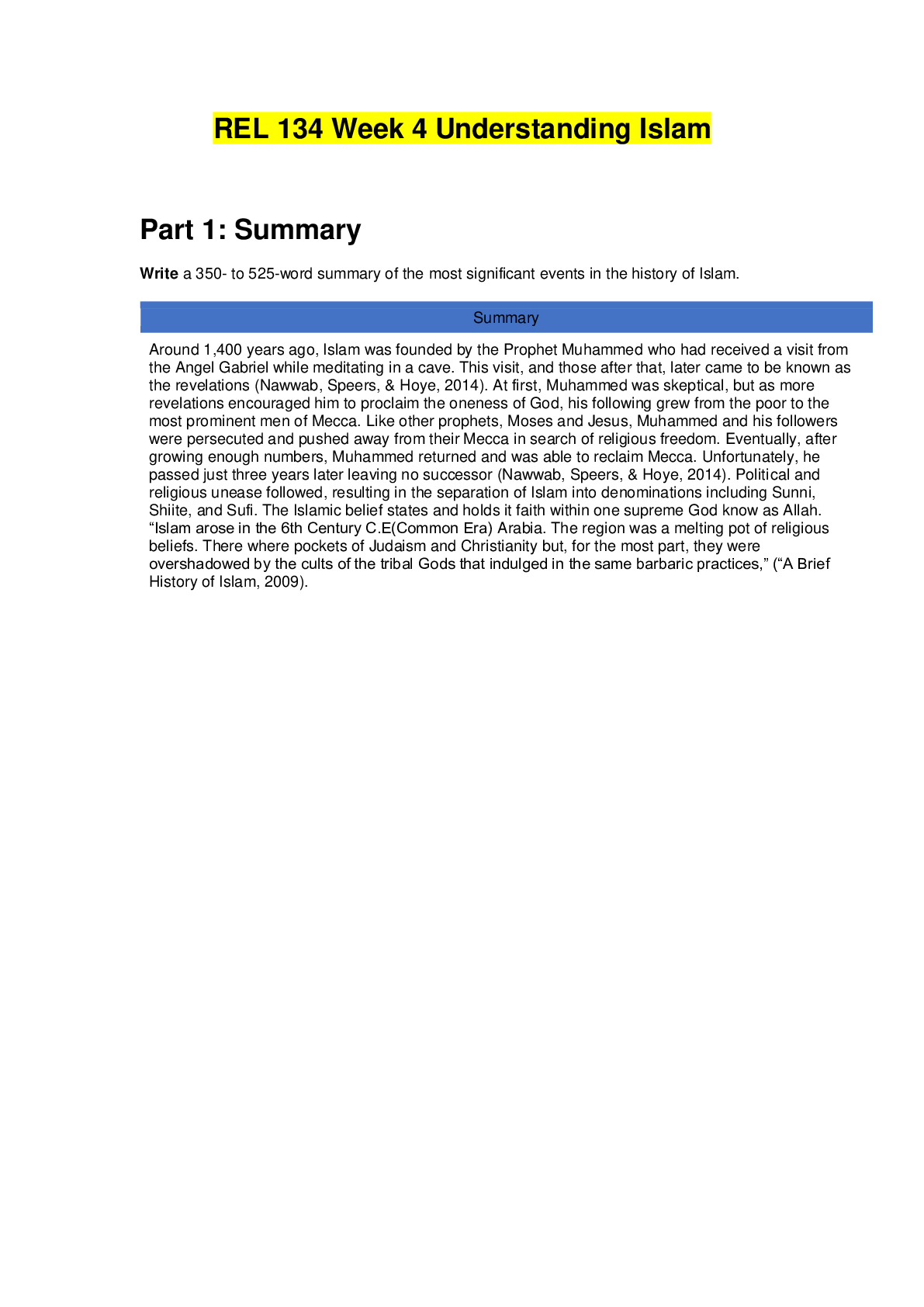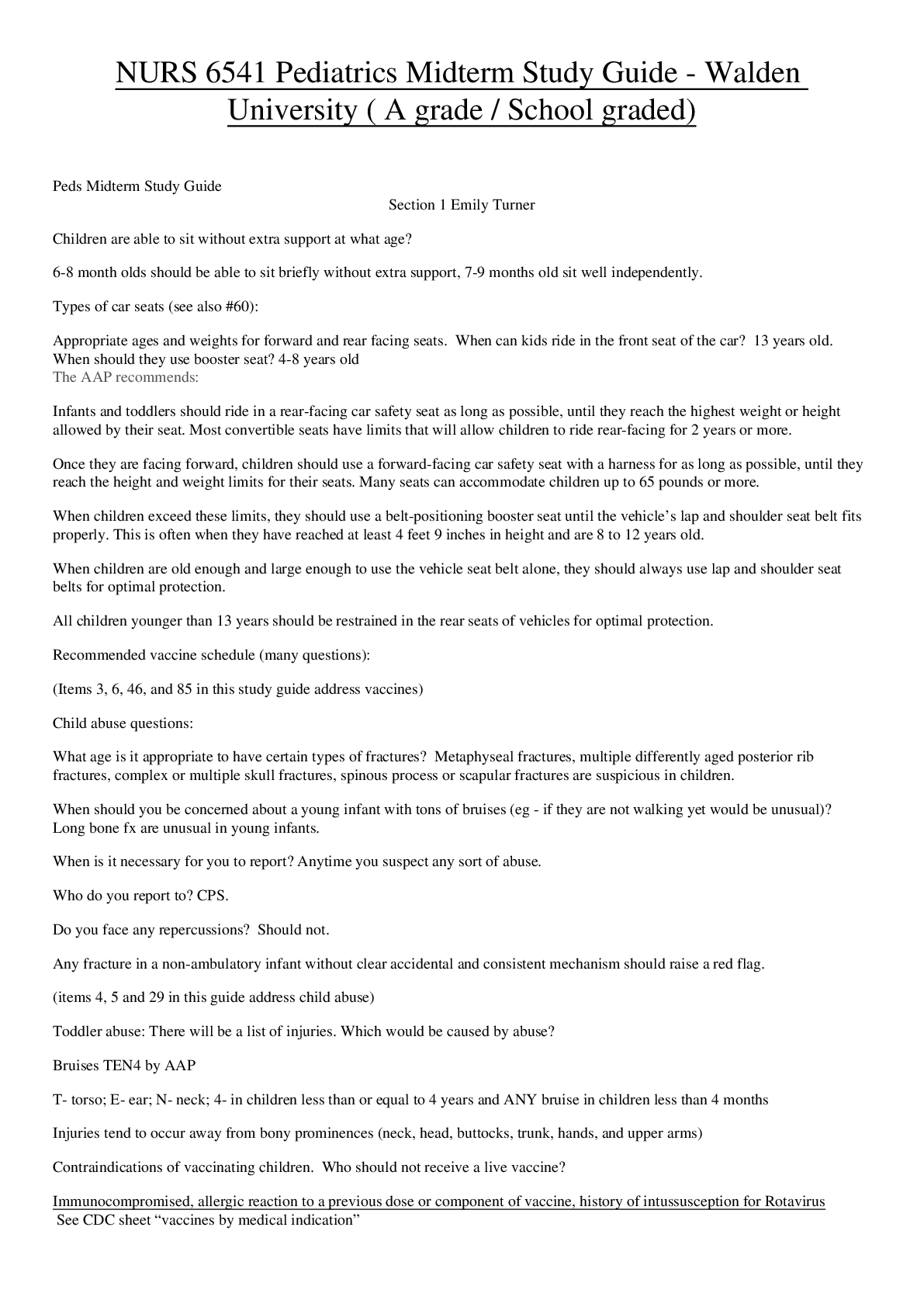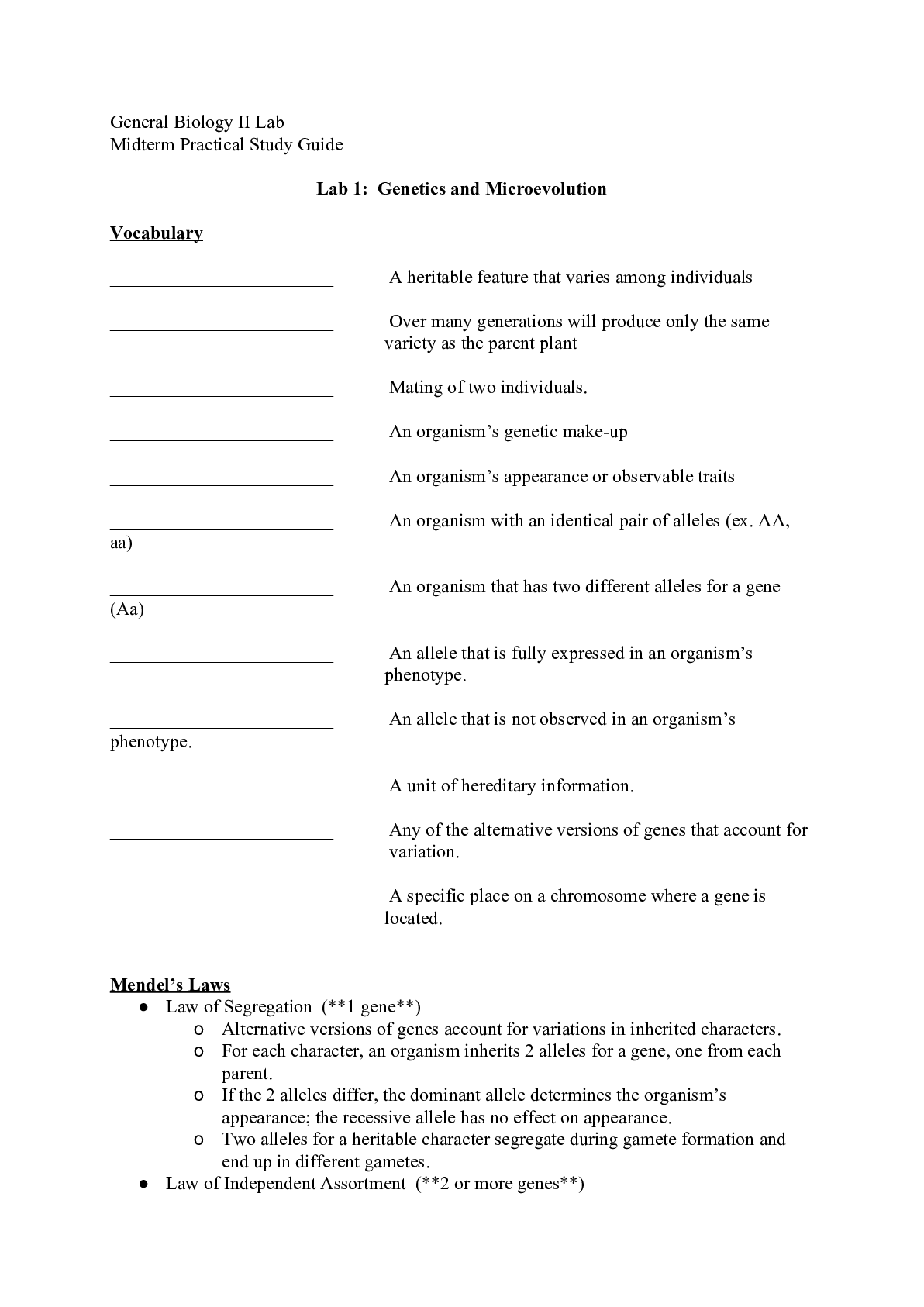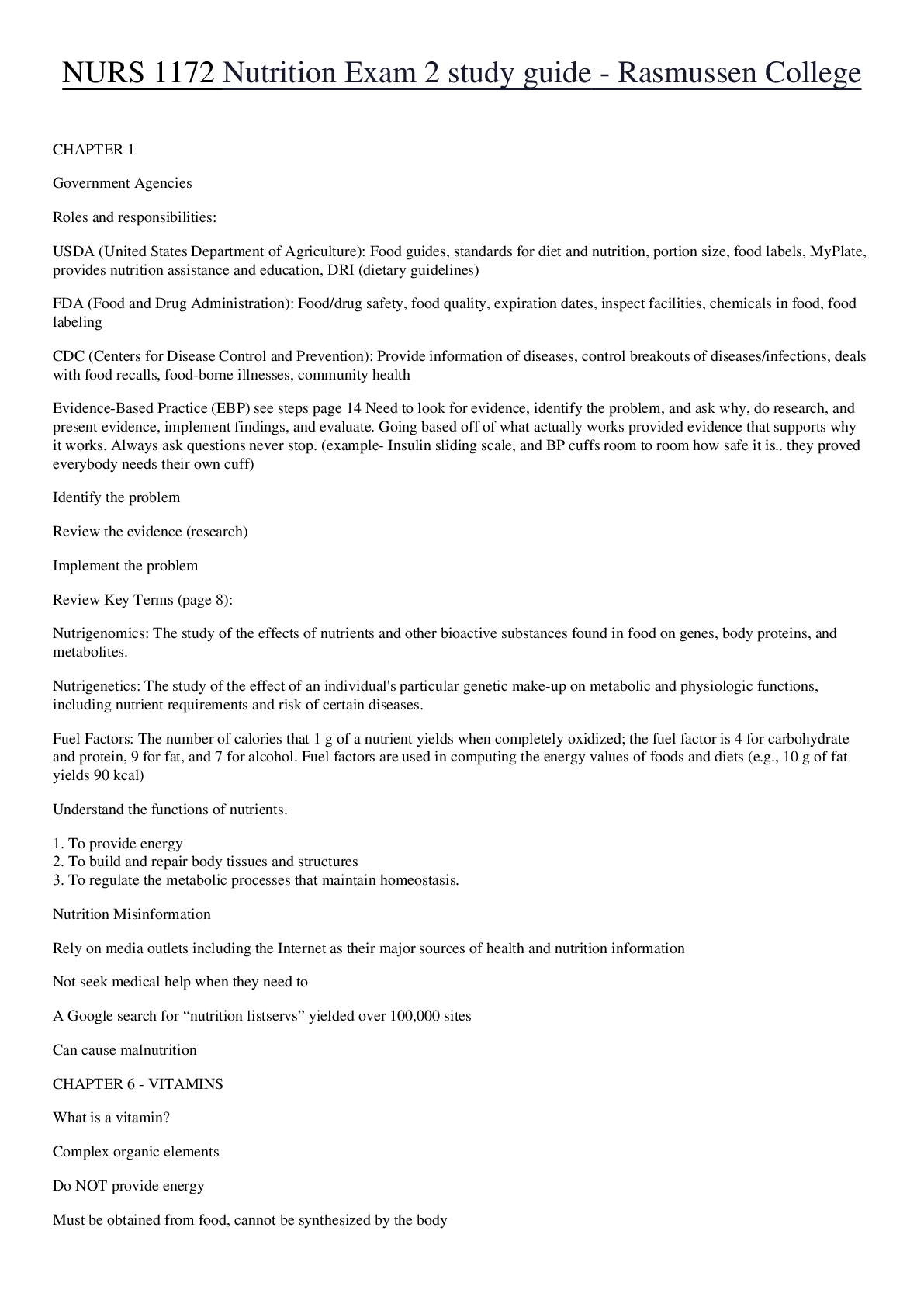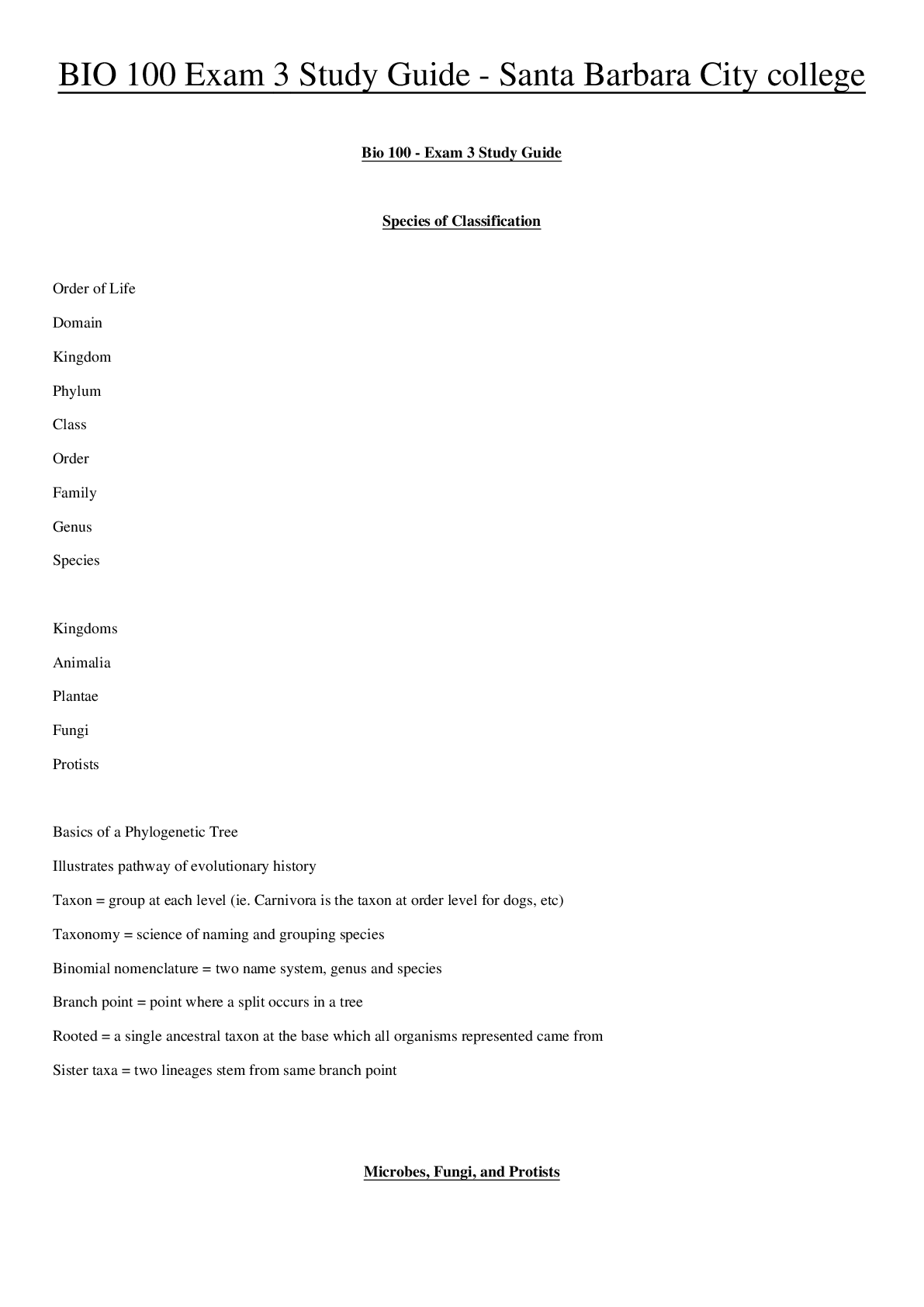Biology > STUDY GUIDE > LS7B Final Study Guide - University of California, Los Angeles LIFESCIENC 7B (All)
LS7B Final Study Guide - University of California, Los Angeles LIFESCIENC 7B
Document Content and Description Below
LS 7B Final Study Guide Week 1 Relate the effects of mutation on the appearance of cancer and other genetic diseases o Cancer has been called a genetic disease because it results from mutations... of genes that regulate cell growth and division. o Nonhereditary forms of cancer result from mutations in somatic cells. These mutations, however, can be induced by environmental factors including tobacco smoke, chemical pollutants, ionizing radiation, and UV light. Hereditary forms of cancer also frequently involve the occurrence of environmentally-induced somatic mutations. o Mutations result from mistakes in DNA replication unregulated cell growth Or unrepaired damage to DNA Can be caused by reactive molecules produced in the normal course of metabolism, chemicals, or radiation Most are spontaneous: occurring by chance in absence of any cause random/unconnected to an organism’s needs Most common mutation = substitution of 1 nucleotide pair for a different one Mutation rates for different organisms range across almost 8 orders of magnitude Highest rates found among RNA viruses and retroviruses o RNA is less stable than DNA Lacks proofreading function Lower rates in DNA viruses and unicellular (bacteria, yeast) Predict the effects of a mutation in the Rb gene on the cell cycle o A mutation in the RB tumor suppressor gene can cause cancer only when it is in homozygous condition o RB protein is a suppressor of cell metabolism o Sporadic randomly occurring in a family o A cell mutant for Rb makes no Rb without Rb no repressor always replicating Describe the difference between a germline and somatic mutation o Germ Cells: reproductive cells that produce sperm or eggs and the cells that give rise to them o Somatic Cells: non-reproductive; other cells of the body o Only germ-line mutations are passed down as they occur in eggs and sperm Rate of mutation per genome per generation that matters more evolution o Somatic mutations only affect individual in which they occur not passed down Rate of mutation per nucleotide per replication matters more Most cancers result from these In some cases, the mutation increases the activity of a gene that promotes cell growth and division, while in other cases, it decreases the activity of a gene that restrains cell growth and division. In either event, the mutant cell and its descendants escape from one of the normal control processes. Fortunately, a single somatic mutation is usually not sufficient to cause cancer—usually two or three or more mutations in different genes are required to derail control of normal cell division so extensively that cancer results. Explain Mendel’s 1st Law: The Law of Segregation o Principle of Segregation: principle by which half the gametes receive one allele of a gene and half receive the other allele o Segregation of alleles reflects the separation of chromosomes in meiosis Explain Mendel’s 2nd Law: The Law of Independent Assortment o Principle of Independent Assortment: the principle that segregation of one set of alleles of a gene pair is independent of the segregation of another set of alleles of a different gene pair Observed when genes segregate independently of one another Reflects the random alignment of chromosomes in meiosis Genes that are very close together on the same chromosome are linked Use the product rule and sum rule o Addition Rule: principle that the probability of either of two mutually exclusive outcomes occurring is given by the sum of their individual probabilities o Multiplication Rule: principle that the probability of two independent events occurring together is the product of their respective probabilities o Example: 2 dice rolling a 1 1 6 ∗1 6 = 1 36 vs 1 dice rolling a 1 or a 2 1 6 + 1 6 = 2 6 Define and use the following terms: dominant, recessive, parental, F1 (G1), F2 (G2), gene, allele, cross, self, genotype, phenotype, homozygous, heterozygous, segregation, Punnett Square, test cross, backcross, product rule, sum rule, independent assortment o Dominant: the trait that appears in the heterozygous offspring of a cross between homozygous genotypes o Recessive: trait that fails to appear in the heterozygous genotypes of a cross between homozygous genotypes o P1 Generation: parental generation in a series of crosses o F1 Generation: first offspring generation o F2 Generation: second offspring generation offspring of F1 o Gene: determinant of heredity that affects certain characteristics o Allele: separate form of a gene o Cross: breeding o Genotype: genetic makeup of a cell or organism o Phenotype: individual’s observable characteristics or traits visible o Homozygous: describes an individual who inherits an allele of the same type from each parent, or a genotype in which both alleles for a given gene are of the same type o Heterozygous: describ [Show More]
Last updated: 2 years ago
Preview 1 out of 15 pages

Buy this document to get the full access instantly
Instant Download Access after purchase
Buy NowInstant download
We Accept:

Reviews( 0 )
$7.00
Can't find what you want? Try our AI powered Search
Document information
Connected school, study & course
About the document
Uploaded On
Dec 06, 2022
Number of pages
15
Written in
Additional information
This document has been written for:
Uploaded
Dec 06, 2022
Downloads
0
Views
70

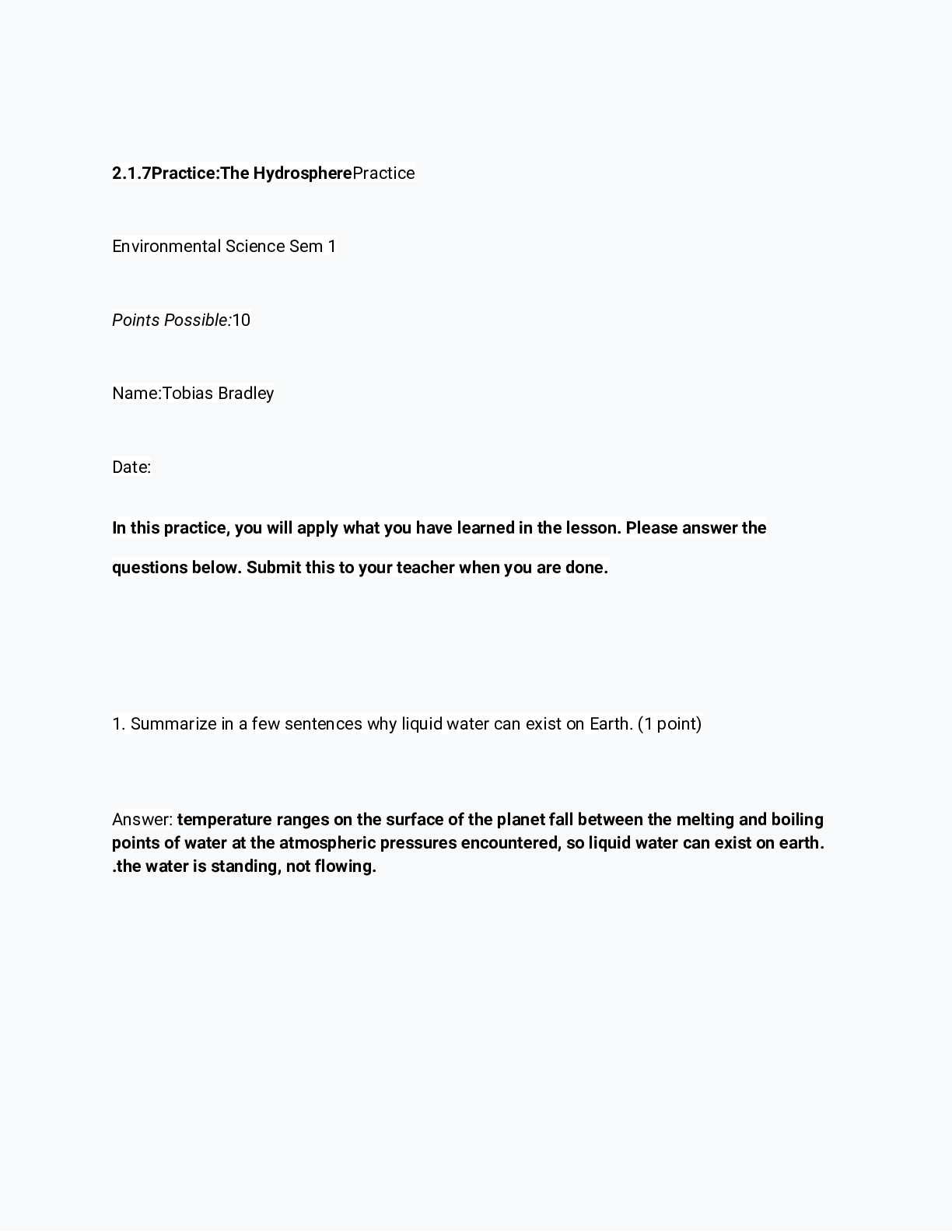




.png)
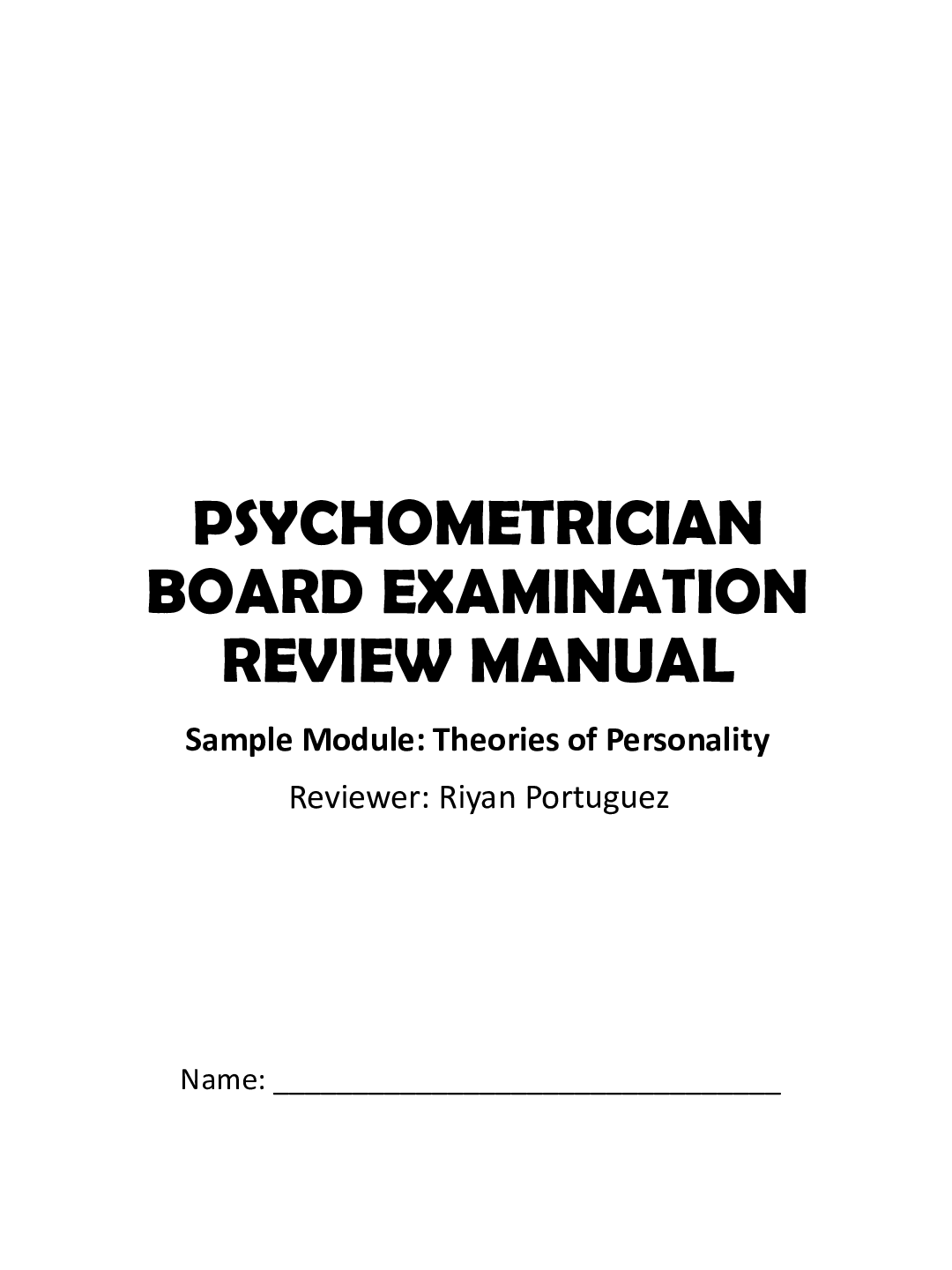
.png)
